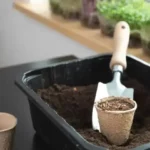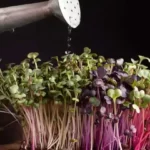As we become more aware of the importance of proper nutrition, we look for continued ways to improve our eating habits. Adding microgreens to our diet is a simple, delicious, and easy option. In fact, microgreens contain more vitamins and minerals than their mature green counterparts growing in the backyard garden. However, it’s essential to remember that the type of microgreen soil you use can significantly affect the growth, health, development, and nutritional content of your precious plants. But with so many soil options available, choosing the right one that suits your needs can be overwhelming.
Seasoned and commercial growers recommend using organic soil and oceanic ingredients for higher yields of microgreens. Household growers can use affordable, sterilized commercial soil that includes a mixture of perlite, vermiculite, and peat moss. Alternatively, micro gardeners can also create and use DIY soil. Still, they should consider baking it first in the oven to eliminate unwanted organisms that may cause disease as your greens begin to germinate.
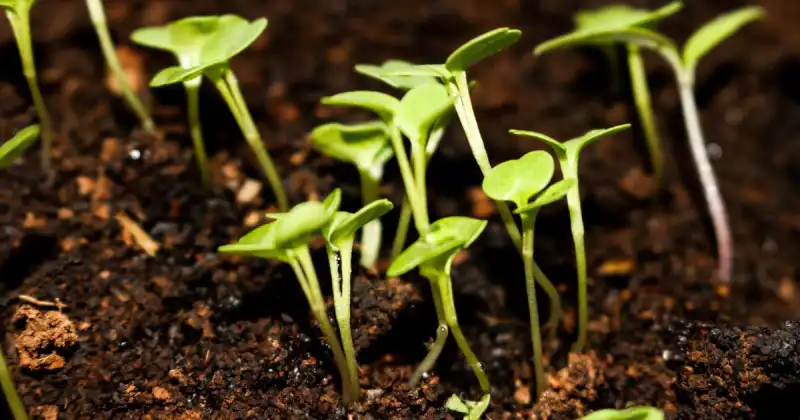
Microgreens are young vegetable plants harvested just a few weeks after germination, typically when only 1-3 inches tall. They are packed with nutrients and have gained popularity recently for their extraordinary health benefits and culinary versatility.
However, suitable soil is necessary to ensure these tiny plants grow correctly. In this article, I’ll cover the various soil types best suited for growing microgreens, so you’ll better understand and cultivate these unique greens. We’ll also discuss the factors influencing soil selection, such as texture, drainage, and nutrient content, so you can quickly learn how to grow these flavorful plants at home.
Humble Highlights
- Discover what soil mixes must have so you can grow vibrant and delicious microgreens right from the comfort of your home, whether you cultivate them inside or out.
- Save money by learning the top 3 choices for microgreen soil so you can grow your healthy greens in a fun, practical, and easy way!
- Save time by understanding these 5 key factors when choosing soil for your micros that will enhance the growth of your plants, EVEN if you’re a complete beginner.
The Importance Of Soil Mixtures For Microgreens
Generally, the importance of soil mixtures for microgreens lies in their ability to deliver essential nutrients, water, and air for optimal growth. Fast and easy-draining soils and high organic matter content, including compost, manure teas, and earthworm castings, support successful and consistent microgreen cultivation. Combining different soil types and managing pH levels ensures impressive shoots and strong roots, resulting in healthy, sustainable microgreens.
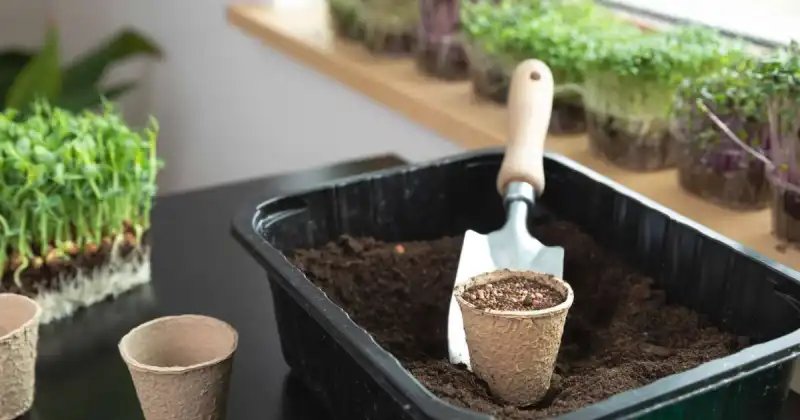
Good air circulation enables oxygen to reach developing roots, reducing disease potential by minimizing fungal and mold activity within your soil. In addition, providing a clean, sterile environment while lessening the chances of disease enhances germination rates and overall yields, promoting faster growth and larger leaves for improved nutritional content. Consider choosing light-textured soils formulated explicitly for small crops, like microgreens, to achieve the best results. 1
Check Lowest Prices On Microgreen Books Here
Top Recommended Soil For Microgreens
The success of growing microgreens largely depends on the soil you choose. Knowing which soil is best for your microgreens can be challenging with so many available options. So, to make growing microgreens easy, fun, and as hassle-free as possible, consider growing your micros in one of the most common and recommended soils used, including:
- Organic Soil Mix
- Commercial Potting Soil
- DIY Soil Mix

Experienced growers have tested these popular options to help grow their microgreens effectively, and they can help you do the same. Producing healthy and flavorful microgreens can be an activity the whole family can enjoy and benefit from. So, let’s take a better look at each option in detail. 2
Organic Soil Mix
An organic soil mix consists of various natural, chemical-free components, providing a fertile and well-balanced growing medium for plants. It encourages robust plant growth without relying on synthetic fertilizers, harsh pesticides, or other artificial additives, making it popular among gardeners who value sustainability, environmental responsibility, and the advantages of chemical-free produce.
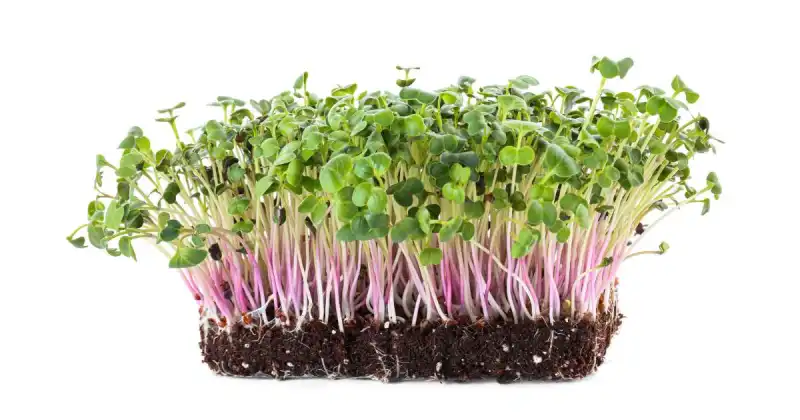
An organic soil mix typically incorporates a range of elements, including peat moss or coco coir for moisture retention and aeration, compost for enriched fertility and improved soil structure, aged bark or other organic matter for slow-release nutrients, and perlite or vermiculite for better drainage and root development. Furthermore, natural fertilizers such as worm castings, kelp meal, or bone meal may be included to supply your flourishing greens with vital nutrients throughout their short lifecycle.
Check Lowest Prices On Microgreen Soil Here
Commercial Potting Soil
While organic soil mixes can significantly produce a higher yield of all-natural microgreens, this process is mainly recommended for commercial growers whose main objective is to profit from their large volume of developing microgreens.
Although organic mixes can be used quite successfully for home growers, it is advisable to opt for affordable commercial potting soil instead of costly alternatives. Since microgreens are typically harvested within 10-14 days, there isn’t enough time for the plants to fully benefit from fertilizers or other additives that may increase the price of store-bought soil. Instead, add a half-inch soil layer to the container for successful growth. This soil type is typically pre-treated to kill most bacteria, fungi, or weeds with either sterilization or pasteurization methods for maximum safety and quality control. 3
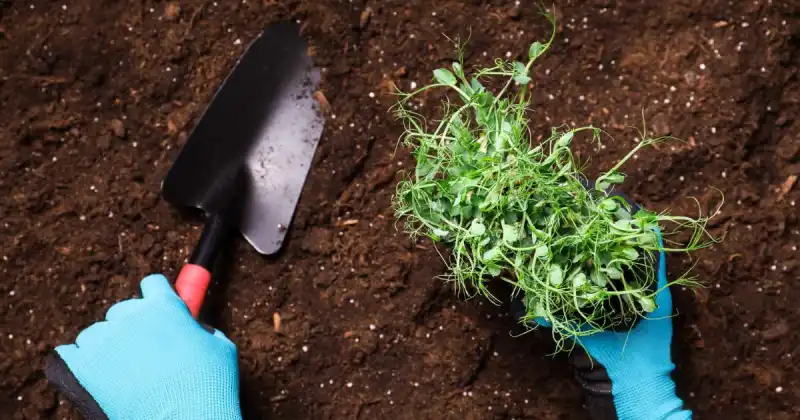
In most cases, supplements may be incorporated to aid drainage and aeration. The typical ingredients present in this commercial potting mix are perlite which provides granulation material, and vermiculite, which breaks up the texture of the earthy medium. The last ingredient is peat moss (or milled sphagnum peat), which keeps the mixture light and sponge-like.
DIY Soil Mix
An ideal soil medium for microgreens may consist of 30% topsoil, 30% compost, 30% peat moss, and 10% perlite. You may also use a 50/50 mix of coconut coir and high-quality potting soil. Remember, microgreens only require a little nutrition from the soil as most nutrients and energy come from the seed itself, along with photosynthesis provided by artificial or natural light. Incorporating coconut coir with the soil creates a finer growing medium with better water retention, requiring less watering and minimizing any disturbance to your sprouting microgreens.
Check Lowest Prices On Coco Coir Here
Given the small quantity of planting medium needed for homegrown microgreens, purchasing commercial, sterilized potting soil is usually more convenient than making your own. A standard 1020 seedling tray typically takes about three quarts of planting medium, so one or two small bags should suffice.
Check Lowest Prices On Standard 1020 Microgreen Trays Here
Factors To Consider When Choosing Soil For Microgreens
There are a few key factors to consider when selecting the ideal soil for your microgreen growing needs, including:
- Drainage
- Soil Texture
- Nutrient Content
- pH Levels
- Organic Matter Content
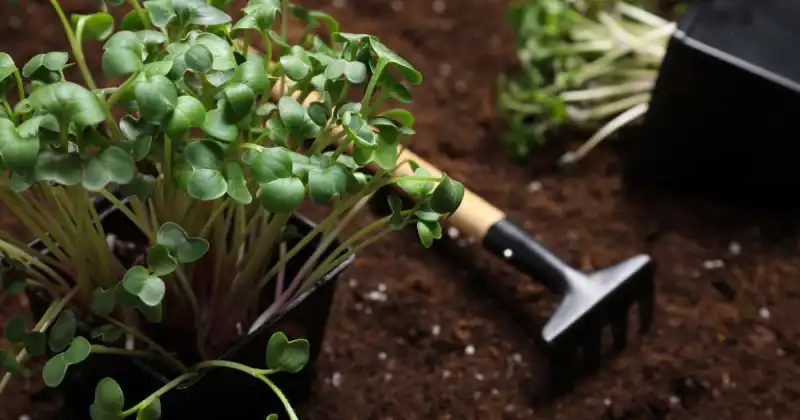
Let’s discuss these vital factors that come into play when selecting suitable soil for your microgreens and explain how each can impact the growth and development of your plants.
Drainage
Soil drainage is an essential factor in growing microgreens. Poor soil drainage leads to waterlogged and soggy conditions, resulting in root rot, plant wilt, stunted growth, and the likelihood of mold growth resulting in a ruined crop. Inferior drainage can also prevent the good bacteria in your soil from breaking down vital nutrients, providing your plants with an unwelcoming and challenging growing environment for germinating seeds. 4
Adequate soil drainage is necessary so excess water moves away from the root zone faster rather than becoming stagnant and impacting oxygen levels around the root system. This leads to an unfriendly domain that can attract disease-causing organisms and fungi. When your soil has good drainage, it helps to limit the growth of harmful pathogens like Pythium. These damaging pathogens can be a real problem during wet seasons when there’s too much water and insufficient time to drain away.
Whether you’re growing microgreens inside or out, aim for wet, not saturated, soil conditions. Watering your micros in a poorly draining tray or container ultimately leads to overwatering, as the water has nowhere to go. This pooling water which may be noticeable above or below the soil line encourages mold to form and is one of the most significant challenges microgreens growers face.
Micros enjoy a warm, damp environment. Unfortunately, so too, does mold. To lessen the chances of mold forming among your greens, ensure your plants have optimal drainage, sterilize your trays, containers, and tools with 3% food-grade hydrogen peroxide, and provide plenty of air circulation among your sprouting plants.
Check Lowest Prices On Food Grade 3% Hydrogen Peroxide Here
Soil Texture
Soil texture is essential in growing microgreens because it directly impacts water conditions and nutrients available to the plants. For example, microgreen roots require plenty of oxygen, which will be determined by how much air space exists between soil particles. Suppose the particles are too large, tightly packed, or compacted altogether. In that case, they provide fewer nooks and crannies for oxygen, thus hindering growth which may result in spotty, uneven development throughout your trays.
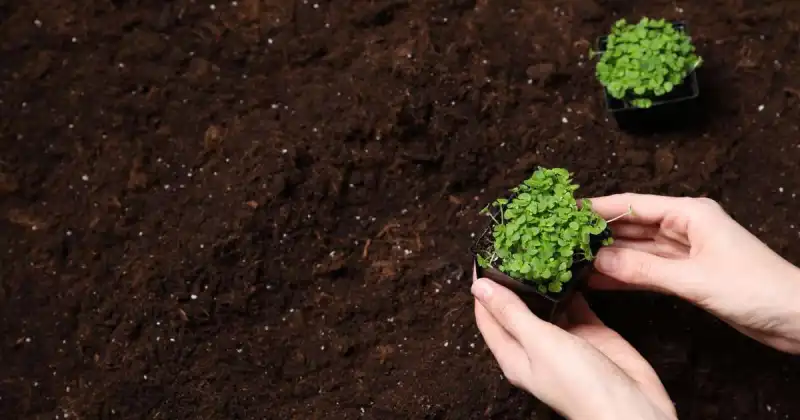
In addition, different textures can affect water retention capabilities. For example, clay-like soils may retain more water than sandy soils that aren’t well aerated. Soils with sufficient percolation speed – the drainage rate of low levels of standing water around plant root systems – are preferred when cultivating crops indoors, where exact control over irrigation layouts is possible.
Lastly, mixing particle-sized materials helps organic matter like leaves and peat moss break down quickly and actively adds fertility to the soil. So, consider incorporating a variety of textures that can also support the growth of microbial populations, leading to healthier and more productive plants.
Here’s a fantastic video explaining the different varieties of microgreen soil, along with an experiment that shows how each type performs over a typical growing period from start to finish.
Nutrient Content
Soil nutrient content is another component in growing healthy microgreens, providing the necessary nutrients for growing plants. And even though the level of available nutrients will vary depending on the soil type, a well-balanced soil with plenty of organic matter is ideal for any budding plant.
The three primary macronutrients found in soil – nitrogen (N), phosphorus (P), and potassium (K) – are critical for healthy growth. However, micronutrients such as magnesium, iron, zinc, and calcium must also be present in adequate amounts for microgreens to thrive. 5
A high-quality potting mix or compost should contain beneficial microbes that can increase the availability of these vital minerals, ensuring optimal nutrition for microgreens throughout their entire lifecycle. Although debate continues about whether micros need extra nutrients when growing in soil, I feel that they should to help them reach their full potential and nutrient viability.

Because of their short growing period, providing a consistent supply of nutrients helps microgreens develop normally and keeps the immunity of these young plants high while generating more extraordinary flavor and color.
Therefore, to ensure your microgreens have access to the proper nutrients, it’s crucial to monitor the nutrient content of your soil and make adjustments as needed.
Check Lowest Prices On Microgreen Soil With Coco Coir Here
pH Levels
The pH level of your soil is a pivotal factor when it comes to growing healthy and nutrient-rich microgreens. Different species of microgreens have varying pH requirements, but most prefer slightly acidic soil with a pH range between 6-7. The soil mix used for growing microgreens is usually carefully tested and adjusted to ensure it has the most beneficial pH for plant growth. However, if you plan to use backyard garden soil for growing microgreens, it’s a good idea to test its current pH level before sowing your microgreen seeds.
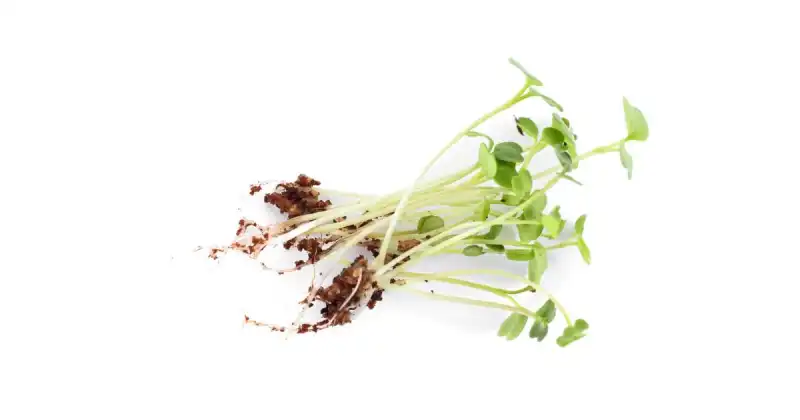
When the pH level falls below this 6 – 7 range, the soil becomes too acidic. Conversely, when levels reach higher, it results in too alkaline or “sweet” soil. Both conditions can impede plant growth and negatively affect final yields, so it’s always essential to test and then amend your soil if necessary to save yourself time and money while avoiding any unnecessary challenges that may arise.
Check Lowest Prices For pH Test Readers Here
To adjust soil pH levels, add lime or potash to sweeten the soil or peat moss and wood chips to make it more acidic. And don’t forget how water may impact your pH levels as well. If your water supply has an unusually high or low pH, repeated irrigations could affect soil levels over time.
While some growers prefer to reuse their soil for future microgreen plantings, I recommend tossing it into your backyard compost pile or tumbler. Then, as you start a fresh crop with new soil, you will lessen the chances that mold and other harmful bacteria could transfer to your next tray or container while being environmentally friendly.
Organic Matter Content
Microgreens require plenty of nitrogen, phosphorus, and potassium to grow. Fortunately, all three elements are readily available in soil enriched with high organic matter levels. By incorporating organic matter, you’ll ensure your microgreens can access the nutrients they need for healthy growth and development. 6
In addition to promoting nutrient availability, organic matter is crucial in maintaining proper soil aeration, drainage, and water retention capacity, all of which are essential for microgreens, as it allows for good root development and ensures that water and nutrients are available when needed.
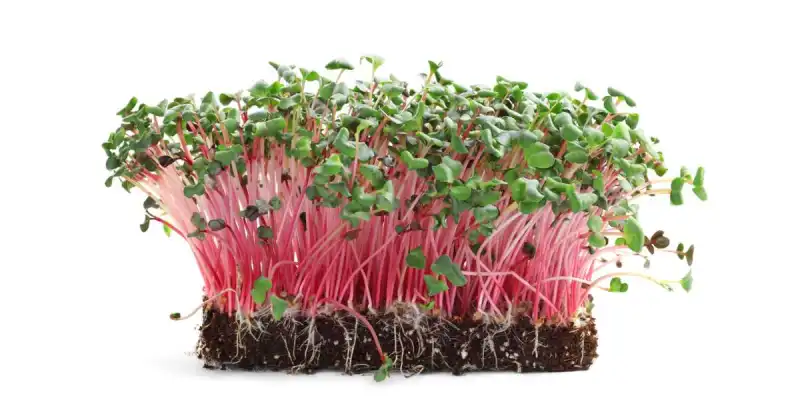
Furthermore, when growing your microgreens outside, worms feed on decaying organic matter in the soil, breaking down plant material as they eat and excrete. As a result, their droppings, also known as worm castings, are incredibly valuable for maintaining healthy soil and promoting nutritious microgreens.
Check Lowest Prices On Worm Castings Here
Conclusion
Happily, you can quickly grow microgreens at home without breaking the bank. However, the soil you use can make or break your microgreen’s success, so selecting the right one for your needs is crucial.
Choosing a light and nutrient-rich soil mix that facilitates good drainage and aeration for optimal results is best. While organic soil is generally the go-to choice for high yields, affordable potting and DIY soil can also suffice, depending on the microgreens you plan to grow.
Whatever option you select, you’ll want to provide your budding greens with the healthiest environment possible throughout their short growth cycle. Therefore, it’s suggested the soil you use offers excellent drainage, good texture, adequate nutrient content, stable pH levels, and contains sufficient organic matter.
What soil do you currently use to grow microgreens successfully? Meet me in the comments below and share your success story with us!
SOURCES
- University Of Florida, Gardening Solutions – Microgreens
- IOP Science – Influence Of Soil And Light Condition On The Growth And Antioxidants Content Of Amaranthus Cruentus (Red Amaranth) Microgreen
- Mississippi State University, Extension – Growing Microgreens For The Mississippi Gardener
- The University Of Arizona, Extension – Microgreens
- Memorial Hall Library – Seed Starting & Growing Microgreens
- Business Insider – Growing Microgreens Is An Easy Gardening Project You Can Do On Your Windowsill – Here’s How To Do It



